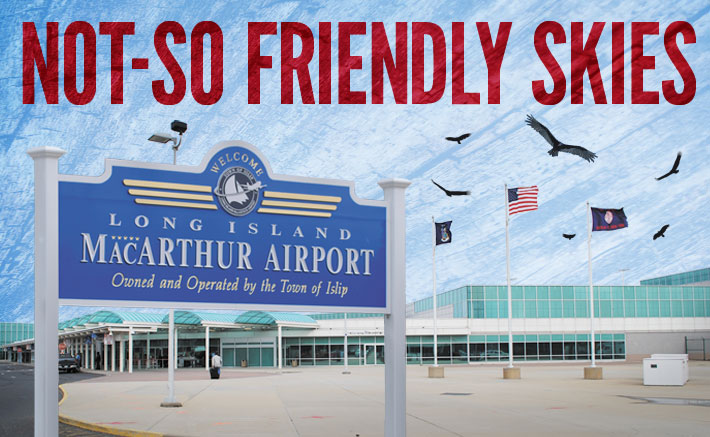
Fishing spots like this one at the Connetquot River State Park Preserve have been quieter than usual lately.
By Kate Kinane and Dana Filipowski
The trout hatchery at Connetquot River State Park Preserve in Oakdale has survived countless natural disasters, the Great Depression and two World Wars, yet the 140-plus-year-old institution has been brought to its knees by an agent that can only be seen through the lens of a microscope.
The historic hatchery was shut down in January 2009 when Infectious Pancreatic Necrosis (IPN), a virus non-communicable to humans, was discovered in young trout. Recently, there’s been a groundswell of support from local elected officials, business leaders, environmental groups and citizens to remediate the situation and get the hatchery back open.
On Aug. 18, Islip Town Supervisor Phil Nolan held a press conference at the preserve to raise awareness about the hatchery’s plight, organize the various groups seeking to have it reopened and discuss possible solutions. The event also kicked off a petition drive for funding from New York State Gov. David Paterson for a comprehensive environmental review, including possibly limited operations at the hatchery as part of the study.
“It’s ridiculous that we haven’t reopened the fishery,” Nolan told those in attendance, which included community and business leaders, fishermen and a swarm of other supporters. “It’s a total bureaucratic mess.”
Nolan and the nonprofit Friends of Connetquot (FOC)—an organization dedicated to preserving the park in its entirety—have been vocal with the way the New York State Department of Environmental Conservation (DEC) has handled the disease and the river’s infected fish.
The preserve’s permit to run the fish hatchery expired December 31, 2008 and can not be renewed until its trout test negative for the sickness. Currently, the hatchery is not set to open for the next five years, or until eggs and young trout are clear of IPN.
Besides shuttering the hatchery, the DEC released all remaining trout into the river downstream, according to a report by the Idle Hour Fly Fishers, a local fishing advocacy group, titled “Connetquot River State Park Trout Hatchery: Victim of Nature and Dysfunctional Government.” Most of those trout, says the report, found their way into another portion of the river outside the park, where they were caught en mass by anglers there. Now, there are very few trout in the hatchery.
IPN, although harmless to humans, is capable of destroying complete ecosystems through the decimation of trout populations. According to the FOC, in an effort to save the fish hatchery, 150,000 supposedly infected young trout were killed in 2007.
DEC spokesperson Maureen Wren tells the Press the temporary closing of the hatchery is part of an overall effort to protect state waterways and prevent the spread of diseases such as IPN. Wren added that regulations on IPN and the actions taken to purge waterways of it are a precedent in Northeastern states, with the exception of Pennsylvania.
The hatchery’s closure has had serious ramifications for the preserve and the Town of Islip, say advocates.
FOC board member Richard Remmer explains the preserve and its hatchery had been an important destination for generations of families—a piece of Islip town history existing in modern times.
Nolan, in a letter announcing the Aug. 18 event, told constituents that preserving the hatchery was “crucial” because of its educational, historical and economic contributions to the town. Fishermen and tourists from around the world visited to fish in the preserve’s waters, he writes, but since the hatchery’s mandated closing, it has received 30 percent less visitors and overall, 90 percent fewer fishers. Many of those anglers are handicapped, as the preserve boasts easily acessible fishing locations for wheelchairs.
In addition, writes Nolan, the hatchery, a historical landmark, provided local students with an important educational experience—enabling them to see the trout and learn about the town’s heritage.
Fishermen have had to pay $20 for four hours of fly fishing at the preserve and are now paying the same amount, but catching a lot less fish, says the FOC. Deputy Regional Director of Long Island State Parks John Kowalchyk acknowledges the drop in attendance and revenue for the park, but says it is not yet in crisis.
“There is an impact,” explains Kowalchyk. “Clearly there are fewer people fishing and they pay that $20 fee and that adds up.”
Local businesses have also suffered, proponents say.
“We have certainly noticed a decrease in fly fishermen coming here,” Harry Fuld, owner of J&H Tackle in Oakdale, tells the Press. Fuld says a fly fishing equipment store once located across the street from him was put out of business due to the hatchery’s closure.
Kowalchyk adds that local hotels and area restaurants, which help stimulate the local economy, have also felt the pinch.
“Any time there is reduced activity in a state park the surrounding community has fewer people coming to that area as a destination,” he says.
Nolan and the FOC hope the proposed environmental review will help identify and address the remediation of the Connetquot’s waters, enabling the hatchery to exist for future generations to come.
“The hatchery has been to us a great source of income, education and pride and we need to work together to get the proper studies done immediately to get the hatchery re-opened for another 140-years,” he writes.






